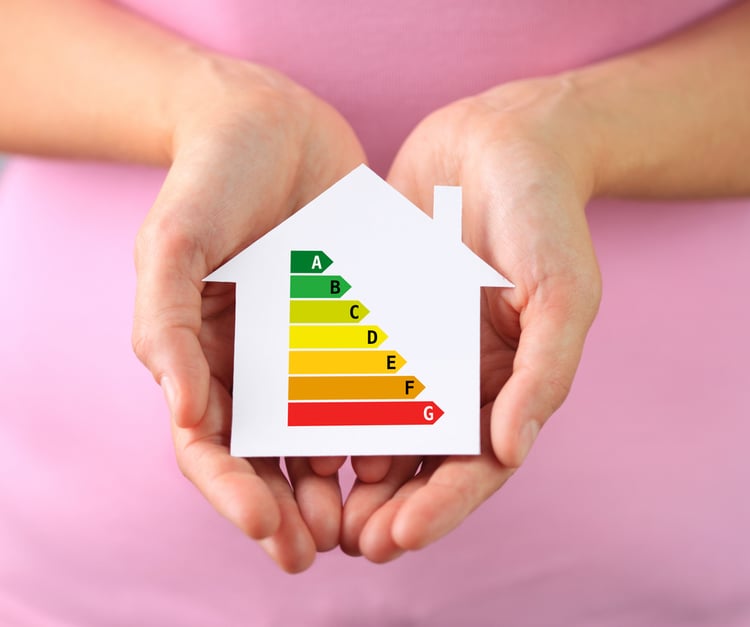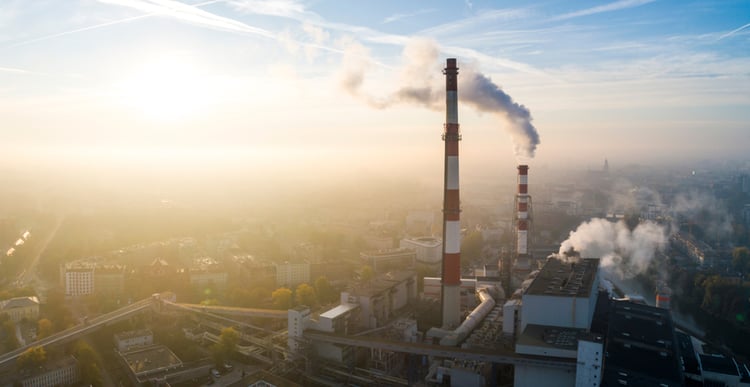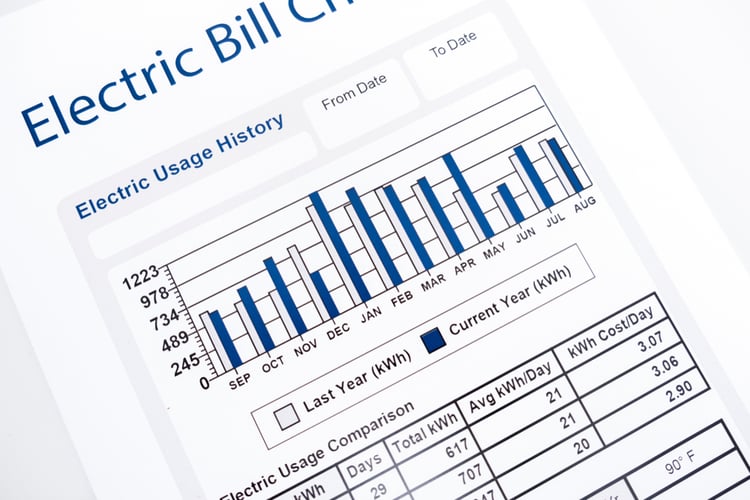Why NYC Landlords Should Focus on Building Energy Efficiency
.png?width=1750&height=276&name=shutterstock_1335074123%20(1).png)
Energy efficiency makes a building more valuable, since it accomplishes the same functions as other similar buildings, while consuming less power and gas. However, in NYC there are even more reasons to invest in energy efficiency. Buildings are subject to a stringent energy code and demanding local laws, electricity is very expensive, and tenants will prefer to sign leases with landlords that help them save.
Local Law 33 requires most NYC buildings to display their energy grade. While the law does not have a minimum mandatory score, displaying the grade is required even if energy performance is low. Assuming all other factors are equal, tenants will prefer an "A" building over a "D" building.
Get a professional energy audit, improve your energy grade, and cut your emissions.
There is also a very stringent law on the horizon - Local Law 97 of 2019. Under this law, most NYC buildings will be forced to cut their emissions, or otherwise they face major fines. One of the most effective methods to lower building emissions is by consuming less energy. You can improve your energy grade under LL33, while preparing your building for LL97.
1) Improving a Building Energy Grade under Local Law 33

Energy grades for NYC buildings were introduced by Local Law 33 of 2018, which was then amended by Local Law 95 of 2019. These energy grades are based on an existing metric, which is the ENERGY STAR Score from 1-100. The score is calculated by the Portfolio Manager tool, based on the building’s reported energy consumption. The score indicates how a building compares with others of its type; for example, a building with an ENERGY STAR Score of 90 is among the top 10% of its type in terms of energy performance.
The LL33 energy grade is assigned based on the ENERGY STAR score of each building:
- Grade A: 85 - 100
- Grade B: 70 - 84
- Grade C: 55 - 69
- Grade D: 54 and below
- Grade F: Failed to report an ENERGY STAR score
- Grade N: Means that the building is exempt from LL33/2018
Buildings must have their energy grade on display, and they will get fines and DOB violations for not complying. Energy grades are updated on a yearly basis, using the Portfolio Manager to recalculate the ENERGY STAR Score with the newest data. A high energy grade provides a marketing advantage, since the prospect of paying lower bills is attractive for tenants. However, the opposite also applies: a low grade can drive-off tenants, and hiding it is illegal.
If you are a building owner in NYC, the most effective way to improve your energy grade is by focusing on quick energy efficiency measures with high savings. These will have a noticeable effect on your next score calculation, and your building can climb to the next letter in the scale. You can then proceed with energy upgrades that take more time to implement - they need more time to have an effect, but they will eventually increase your energy grade as well.
2) Meeting the Emissions Reduction Law for NYC Buildings

The Climate Mobilization Act, which is often called the NYC Green New Deal, was passed in 2019. The Act includes Local Law 97, which places mandatory emission limits for NYC buildings larger than 25,000 sf. The first of these limits will be applied in 2024, affecting the top 20% of buildings with the highest emissions. More stringent limits come into effect in 2030, affecting the top 75% of buildings.
By investing in energy efficiency, you are not only raising the energy grade of your buildings. Emissions are also reduced, which means you can meet LL97 before its emission limits come into effect. There are three cases in which a building owner may be fined under this law:
- Exceeding the emissions limit ($268 per year per metric ton)
- Not delivering an emissions report on time. ($0.50/sf per month)
- Delivering a misleading report ($500,000 and up to 30 days of imprisonment)
By working to reduce emissions in advance, you can meet the corresponding targets for your building more easily. At the same time you will be improving your energy grade, making the property more attractive for tenants. Buildings that get an “A” are the most efficient in NYC, and they are likely to meet the emissions reduction target as well.
3) Avoiding the High Electricity Prices of New York

According to the latest electricity price data from the US Energy Information Administration, the US has an average price of 13.34 cents/kWh in the residential sector and 11.93 cents/kWh in the commercial sector.
- NY state has an average residential price of 18.78 cents/kWh, which is 41% higher than the national average.
- The average commercial price is 15.16 cents/kWh, 27% higher than the national average.
Electric tariffs are even higher in the Con Edison service area, where many users are charged more than 25 cents/kWh. However, this also makes energy efficiency more valuable, since the kWh savings are multiplied by a higher rate. For example, 1,000 kWh in savings are worth $130 to someone paying 13 cents/kWh, but they are worth $250 for someone paying 25 cents/kWh.
Other than improving their energy grade and meeting their emissions targets, NYC landowners have to deal with rising electricity prices. Energy efficiency measures can help them deal with all three issues at once.

Michael Tobias
Michael Tobias, the Founding Principal of NY Engineers, currently leads a team of 150+ MEP/FP engineers and has led over 4,000 projects in the US
Join 15,000+ Fellow Architects and Contractors
Get expert engineering tips straight to your inbox. Subscribe to the NY Engineers Blog below.

